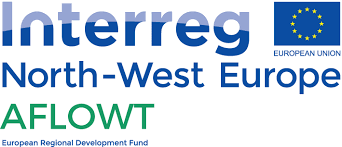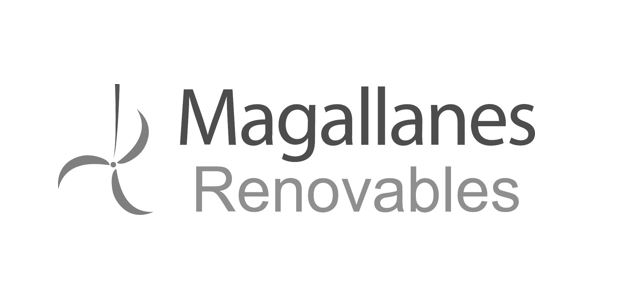AFLOWT

Project: AFLOWT (Accelerating market uptake of Floating Offshore Wind Technology)
Timescale: 2019-2023
Funder: Interreg North-West Europe
Funding: EU FUNDING – € 14.09 m / TOTAL BUDGET – € 31.13 m
Project aim
AFLOWT aimed to accelerate market uptake of floating offshore wind in North West Europe. The region has some of the strongest wind and ocean resources in the world.
Challenges being addressed
The biggest hurdles for floating wind development are:
- demonstrating cost-effective floating technologies at model and full scale,
- attracting investors and project developers to support and adopt the technology,
- creating a clear and supportive policy environment, and
- developing an active supply chain to meet the needs of the floating wind industry.
Overcoming these four challenges will enable a route to market for multi-GW deployments.
Project outcomes
AFLOWT partners worked together to overcome the hurdles to floating wind by:
- Supporting the development of five test sites for demonstrating floating technologies: AMETS, EMEC (see below), MARIN, Wave Hub and MISTRAL. Test sites are essential for assessing and optimising new concepts and prototypes’ performance, reliability, and environmental impact. Thorough testing will allow developers to establish practices that help to reduce the LCOE of floating wind in the future.
- Engaging investors and project developers about technology investability: via a series of showcase events during the project. Read about the 2022 innovation tour in Nantes.
- Supporting the development of an active supply chain: an analysis of the existing technically capable suppliers in the NWE region was undertaken to identify gaps to competing in international market standards. The supply chain analysis revealed an overall well-developed supply chain across the entire NWE region, however there is a lack of resources or vendors for decommissioning. A comparison of the countries showed that Scotland is the most established country within NWE with respect to the supply chain for floating offshore wind development, followed by Germany and France, and the more landlocked countries (e.g. Belgium, Luxembourg, and Switzerland) have less established supply chains.
- Publishing a Floating Offshore Wind Development Plan: providing a common vision for floating wind development across North West Europe. Download here.
For a full overview of the project visit: Interreg NWE – AFLOWT project
EMEC role
EMEC was the lead project partner, and initially focused efforts on supporting the development of the AMETS site, advising on H&S systems and operating procedures. As the project developed, and underwent some modifications EMEC’s role evolved to include:
- Concept design and business case for a new floating offshore wind test and demonstration site in the UK. With water depths of 80-95 meters, large waves and a mean windspeed of 10.7 m/s, the site will offer floating wind developers representative metocean conditions to those in ScotWind, Celtic Seas, INTOG, and future leasing rounds. The economic potential of the proposed demonstration site has been estimated at £690 million to UK economy. For further details see: EMEC white paper detailing the needs case for a UK national floating wind test centre.
- Concept design of a floating subsystem test platform. EMEC commissioned Quoceant to develop a Design Basis document for the floating platform to inform onward development. This included OrcaFlex modelling to help inform the platform design choices, targeted user-engagement, pre-FEED to set-out the platform configuration and compilation of a Design Basis document setting out design principals, site and environmental conditions, high-level functional requirements and applicable codes and standards for onward design. The scale-platform would enable at sea testing of a range of novel subsystem components such as monitoring equipment, mooring technologies, new materials, and many more.
EMEC also hosted a distributed acoustic, strain and temperature monitoring demonstration by FEBUS Optics which was completed on EMEC’s existing subsea cables. The demonstration showed the capacity of Distributed Fiber Optic Sensors (DFOS) to monitor status of dynamic cables. Results showed a sensitivity of DFOS to the mechanical forces applied on cables and especially on dynamic cables that are used for floating energy technologies. Axial strain transferred to the cable have been observed to vary according to the strength of tides. Validating a cable monitoring solution will be useful for floating wind developments helping to increase offshore wind turbine lifespan, reduce maintenance costs and risks, improve environmental performance, and optimise production.
Partners
- EMEC (lead partner)
- Sustainable Energy Authority of Ireland (test site owner)
- SAIPEM SA (technology partner)
- Maritime Research Institute Netherlands (MARIN)
- University College Cork, National University of Ireland
- Electricity Supply Board International
- Fraunhofer Institute for Wind Energy Systems
- CALICYA (Cable Life Cycle Assurance)
- OPEN-C Foundation
Related news
- Dec 2023: White paper details needs case for UK national floating wind test centre
- Sept 2023: AFLOWT publishes Floating Offshore Wind Development Plan
- Jan 2023: EMEC floating wind demo site offers £690 million opportunity to UK
- Oct 2022: EMEC concludes concept design on 100 MW floating wind test site
- Apr 2021: AFLOWT project update
- Mar 2019: €31m project secured for floating wind project in North West Europe






